News project armored personnel carrier with a hybrid power plant "Krymsk"
The reason for the latest media reports were the statements made by Alexander Krasovitsky, Director General of the Military Industrial Company, made during the KADEX-2016 exhibition (Astana, Kazakhstan). According to the head, the organization is currently engaged in a number of promising armored vehicles projects, among which there is a unified Boomerang platform. In addition, work is underway on a model of armored vehicles equipped with an unusual power plant and transmission. Such equipment is not yet in service, but may be of particular interest to the army.
According to Rossiyskaya Gazeta, a new model of armored vehicles has already been tested at the test site of the Research Testing Center for Research and Development Prospects for the Armored Equipment of the Armed Forces of the 3 Central Research Institute of the Ministry of Defense. Testers noted that an experienced armored vehicle of a new type differs from the existing models in a number of features. Indicated a smooth ride, good dynamic performance and high maneuverability. It is reported that testing a new prototype continues to this day.
It should be noted that the existing descriptions of the new prototype armored car remind one of the existing projects developed for experimental purposes several years ago. Previously, the use of a hybrid power plant using an electric transmission was developed as part of a research project under the code "Krymsk". The creation of this project was completed in the middle of 2013, after which an experienced machine was assembled, which was to take part in the trials. According to various sources, the verification of this technique continues to this day.
Published in recent days, information about the new project of the “Military-Industrial Company” suggests that now we are talking about the continuation of tests of the experimental Krymsk armored vehicle, which has already passed some tests a few years ago. It is possible that the existing prototype has undergone a refinement process and has been refined based on test results. As a result, it could have been a modernized version of the armored vehicle, which now passes the next stage of inspections.
According to reports, work on the Krymsk theme started at the beginning of the current decade on the order of the Ministry of Defense. The task of the project was to create a promising armored combat vehicle with a wheeled chassis, a hybrid power plant and an electric transmission. The development of the project was entrusted to the “Military Industrial Company”, which has considerable experience in the development of armored vehicles. In addition, the project involved some other organizations that were responsible for certain components of advanced systems. The BTR-90 “Rostok” armored personnel carrier was proposed as a base for the experimental vehicle “Krymsk”. This machine has passed the test earlier, but has not entered the series. From the purchase of serial equipment of this type refused approximately simultaneously with the start of the project "Krymsk".
Development of the project lasted for several years. In July, 2013, the company-developer announced the completion of the design. Completion of the design work allowed to proceed to the construction and subsequent testing of a prototype. Probably, one of the available BTR-90 prototypes was used in the construction of the Krymsk-type vehicle.
As part of the research "Crimea" was saved the existing armored corps, borrowed from the base armored personnel carrier. The body is a welded design of armor plates of various shapes and thicknesses, providing protection against small weapons, splinters, etc. threats. Provides a wedge-shaped frontal part, consisting of several sheets of side with a protruding middle part, and a vertical stern sheet. In the basic configuration, the armored personnel carrier had a layout that was classic for a similar technique of domestic development. In front of the machine, a control compartment was placed, behind it, a combat and amphibious compartment, and the feed was given under the engine and part of the transmission units.
There was a four-wheel all-wheel drive chassis. As part of the independent suspension used torsion bars with telescopic hydraulic shock absorbers. The arrangement of wheels, traditional for domestic armored personnel carriers, remained with an increased gap between the second and third axles, in which openings for the doors of the troop compartment were placed. The first two axes performed manageable. To move on the water, the BTR-90 received two jet propulsion in the aft hull.
The Rostock machine was equipped with a multi-fuel diesel engine 2В-06-2С hp 510. The engine had a pressurization system and liquid cooling. The power plant was connected to a reversible hydromechanical gearbox. With the help of the available engine and transmission, the car could reach speeds (on the highway) over 100 km / h, and on the water it could accelerate to 12 km / h. Cruising reached 800 km.
The wheeled chassis was proposed to equip several types of combat modules. Thus, in the initial configuration, the armored personnel carrier had a turret with an 30-mm automatic 2A42 cannon, a twin PKTM machine gun of the 7,62 mm caliber, an AGN-30 automatic grenade launcher and the Contest-M missile system. A variant of such a combat module with a fire control system and a thermal sight was also proposed. The installation on an armored personnel carrier of the Bakhcha-U combat module with a 17-mm gun-launcher 100А2, 70-mm 30А2 gun, a machine gun and a missile system was being worked out.
Internal dimensions allowed the BTR-90 to carry three crew members responsible for operating various systems and seven paratroopers. For the crew and the landing in the roof of the hull provided several hatches. There were also double side doors.
The BTR-90 differed from its predecessors in increased weight and dimensions. The length of the vehicle was 8,2 m, width - 3,1 m, height with the turret - 3 m. Combat weight reached 22 t. Previous armored personnel carriers differed in smaller size and weight.
During the redesign of the new project, the base armored carrier lost a number of basic units, instead of which they installed new equipment. It was decided to change the composition of the power plant, in addition, provided for the use of a radically new transmission based on electrical equipment. In fact, only the hull and the undercarriage remained without significant changes. In addition, the experimental vehicle lost its combat module and some other elements related to its original purpose. The result of all these improvements was the incarnation "in the metal" of a number of original ideas that were planned to be tested in practice.
On the existing chassis were installed power plant and transmission, built according to the scheme "serial hybrid". Electric transmission is made according to the “semi-axle” scheme. Similar features of the architecture of the units were identified as the most convenient and promising for use on advanced armored vehicles.
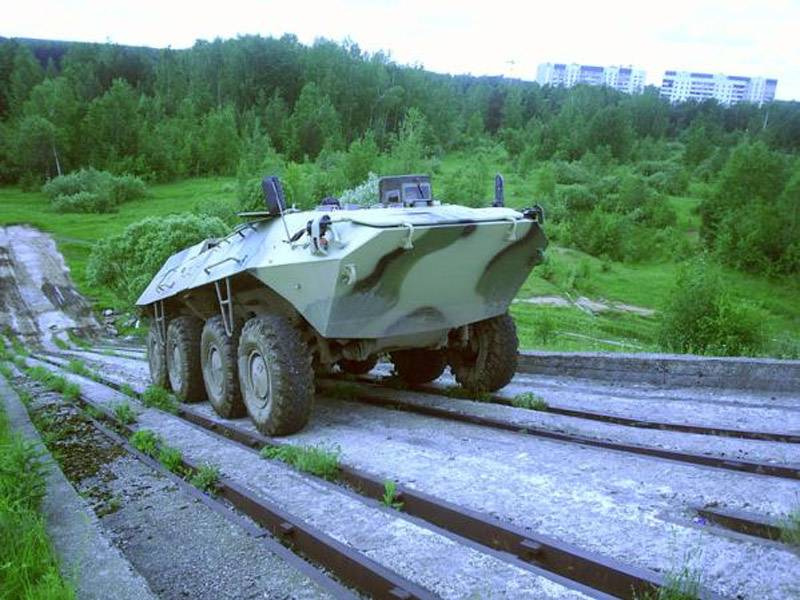
Rise on a slope. Photo Militaryrussia.ru
In the course of the modernization, the armored personnel carrier received a new diesel engine of the YaMZ-650.10 type, the power of which was limited to the HP 360. Directly to the main engine is a valve inductor electric generator developed by Elton OJSC. The generator is made of controlled electromagnetic and has an excitation winding. With the help of the latter, it is proposed to control the parameters of the engine and generator, optimizing the modes of their joint operation, depending on the existing conditions and the required characteristics. It is possible to use the main generator as an electric motor. In this mode, it can be used as a starter or for "engine braking".
As part of the electric transmission, developed in the framework of the project "Krymsk", there are power converters of energy created by NPP "Cycle +", as well as a distributed microprocessor control system from NPF "Vector". The task of this equipment is to monitor the operation of all systems, including traction electric motors. There is a possibility of automatic correction of engine operating parameters, due to which various important functions are realized. Automation is able to take on the functions of active safety, monitor the maintenance of speed, as well as control the correct direction of movement. All control in these modes is carried out by changing the torque of the traction motors, both synchronously and separately.
The electric transmission of the Krymsk project is also equipped with additional drives, with the help of which the armored vehicle can save energy and, if necessary, be used for various purposes. The energy storage device is based on the Elton electrochemical capacitors. System capacity - 300 kW. According to the latest data, the prototype machine has received improved high capacity drives.
For the movement of the experimental chassis are responsible eight traction motors, created by the scientific group of GOU VPO "MEI (TU)". These devices are built on a valve inductor circuit and are equipped with an excitation winding. In addition, built-in planetary gearboxes are provided. During the development of traction motors, it was possible to solve a number of the most important design tasks, which led to an increase in performance to the required level and allowed the use of a new type of propulsion unit on experimental equipment.
The general principle of operation of the hybrid power plant and electric transmission proposed by the Krymsk project is as follows. The main diesel engine drives a generator that supplies electricity to transmission systems. Those using automatic commands distribute the energy between the traction motors and the accumulator. In addition, automation monitors the parameters of the systems and the characteristics of the machine, and also calculates commands for the various elements of the transmission. The latter allows you to automate some processes and simplify machine control.
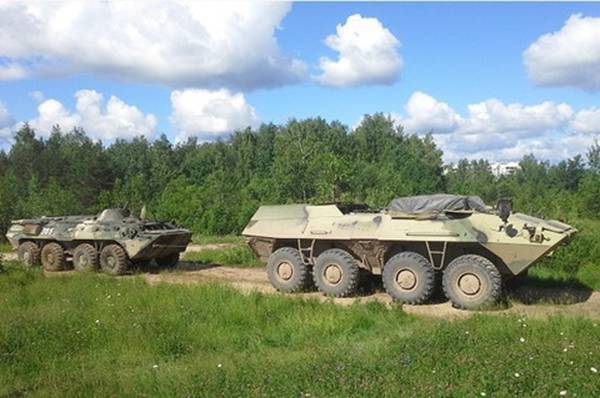
Towing the BTR-80 experimental machine. Photo Gurkhan.blogspot.ru
A curious feature of the electric transmission of the project "Krymsk" is the current conversion during its passage from the generator to consumer devices. The main generator generates alternating current. It is then converted to permanent, used by all major systems, both engines and drive. This feature of electrical systems has allowed to optimize some processes.
Depending on the mode of movement of the machine, the automatic control system should change the operating modes of the power plant, as well as use the reserve in the form of a drive. So, when driving on a highway with a steady speed, excess electricity must be transferred to the drive. If it is necessary to accelerate or climb a slope, traction motors should receive energy from both the generator and the drive. When braking, the kinetic energy of the machine using the appropriate mode of the engines is partially converted into electrical energy and transferred to the drive. Also referred to the possibility of moving the machine exclusively with the help of the drive, with the engine off. In this case, the armored personnel carrier can travel for some distance almost silently. Earlier it was claimed that in the course of improving the drive, it was possible to increase the stroke range several times without using the main engine.
Due to the absence of serious modifications of the hull, the dimensions of the test vehicle correspond to the size of the base armored personnel carrier. At the same time, the overall height decreased slightly due to the dismantling of the tower that was no longer needed with weapons. Dismantling the tower, however, did not affect the overall weight of the machine, since it received new units. As a result, the total mass of the Krymsk prototype was 22 t.
During the tests, it was found that on a good road, the prospective chassis can reach speeds of up to 97 km / h. When moving on a dirt road, the maximum speed drops to 75 km / h. Also practiced towing other equipment. The prototype of the Krymsk vehicle could carry the BTR-80 armored personnel carrier weighing more than 13 tons at a speed of up to 48 km / h. The possibility of movement with cargo in tow on steep slopes to 15 ° was confirmed. Without a load, the climb parameters are higher - up to 30 °. Cruising range - 940 km.
The automated control system for electric transmission has significantly increased the maneuverability of the machine. For example, depending on various parameters, it allows you to rotate in different ways. If necessary, it is possible to perform rotation when multidirectional rotation of the wheels of different sides. Due to this, the turning radius has decreased to 3,8 m - in fact, the armored car turns in place.
The 2013-14 tests showed that the experimental Krymsk chassis is not inferior to the BTR-90 basic armored personnel carrier in a number of parameters, and surpasses it in other characteristics. Through the use of a hybrid power plant and electric transmission, it was possible to keep the mobility parameters at an acceptable level, but with some advantages over the existing equipment. Thus, similar mobility parameters in comparison with the BTR-90 are achieved with the help of the main engine of reduced power. The base armored personnel carrier had a 510-strong engine, and the experimental machine “Krymsk” for similar characteristics requires a motor with a power of only 360 hp. Among other things, this led to significant fuel savings and a corresponding increase in power reserve.
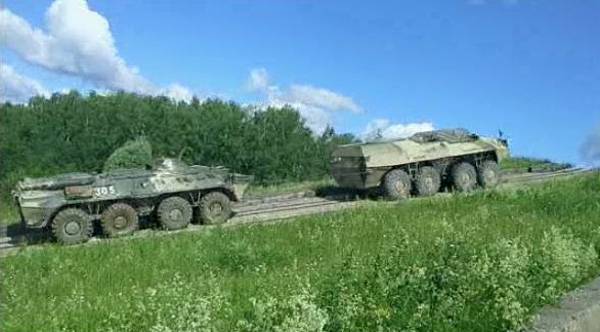
Rise on a small slope with an armored personnel carrier in tow. Photo Militaryrussa.ru
In some sources it was mentioned that the new version of the power plant and transmission allowed to optimize the distribution of internal hull volumes. Thus, the new units make it possible to build the equipment using the most advantageous scheme without any difficulties or losses of the assembly nature. This feature can be used to increase the volume under the payload: troops, ammunition, etc.
The first reports on the Krymsk project appeared in open sources in the middle of 2013, when the development of the project was completed and the testing began. In the future, any new reports about the work did not appear, however, from time to time a promising project was remembered, and it became the reason for a new wave of discussions. After a long break in the media, references to promising developments in the field of hybrid powertrains and electric transmission reappeared. The last time such a project was mentioned by the head of the “Military Industrial Company” as an example of promising developments in the field of armored vehicles.
According to recent reports, a promising armored vehicle with an unusual power plant and transmission is currently being tested. There is reason to believe that this is an improved and modified version of the already well-known Krymsk machine. This means that the promising project was not closed and developed. Nevertheless, the exact prospects of this development may still raise questions. For one reason or another, equipment with original equipment may not be of interest to a potential customer.
However, there are still no grounds for pessimism. At the beginning of June of this year, the management of the “Military Industrial Company” said that a prototype model of new equipment had passed the necessary checks, and the latest acts from the Ministry of Defense would be signed soon. If necessary, the company-developer will be able to start mass production of new technology and begin supplying vehicles to the troops.
The Krymsk project is of great interest in the context of the further development of military equipment. Tests of the prototype showed that the original systems are capable of giving the required characteristics to the equipment, as well as provide some superiority over the existing samples with the "traditional" onboard systems. At the same time, there is a significant degree of novelty, complexity and the need to develop new machinery units. Thus, an interesting project can reach the stage of mass production in the interests of the army. The authors of the project in this regard show some optimism. Will there be an order for a new type of armored vehicles, time will tell. By now, the prototype of the prospective armored vehicle has completed the tests, the further fate of the entire project is likely to be determined in the near future.
On the materials of the sites:
https://rg.ru/
https://ria.ru/
//vpk.name/
//arms-expo.ru/
//gurkhan.blogspot.ru/
//militaryrussia.ru/blog/topic-757.html
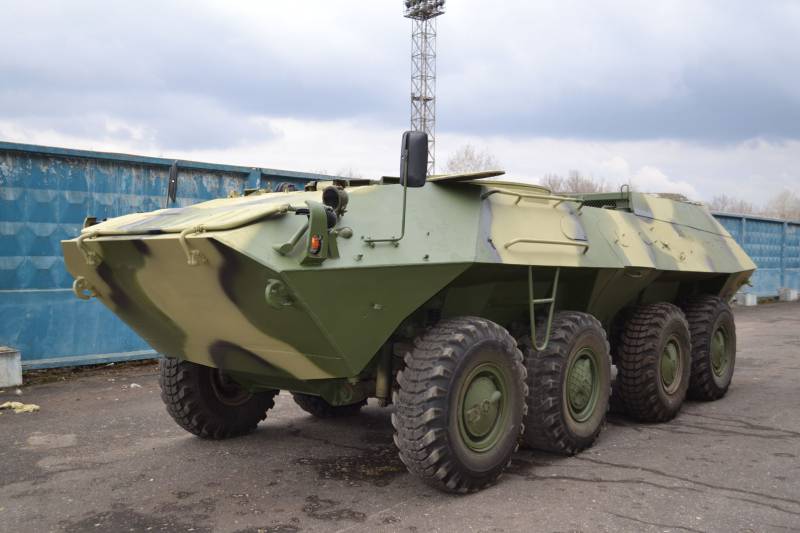
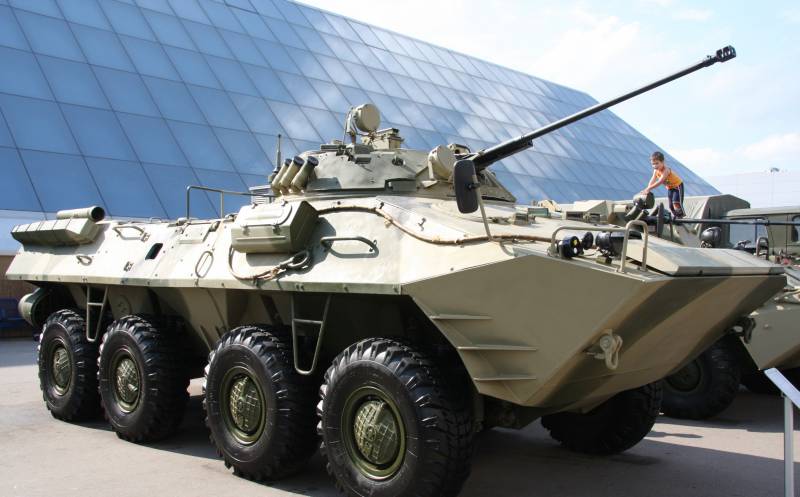
Information